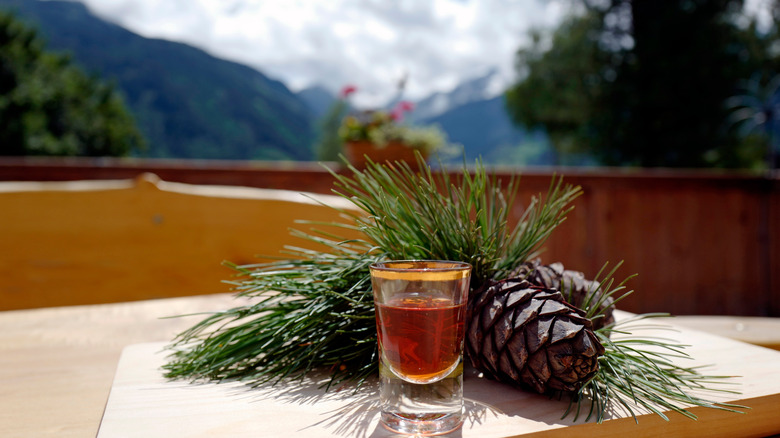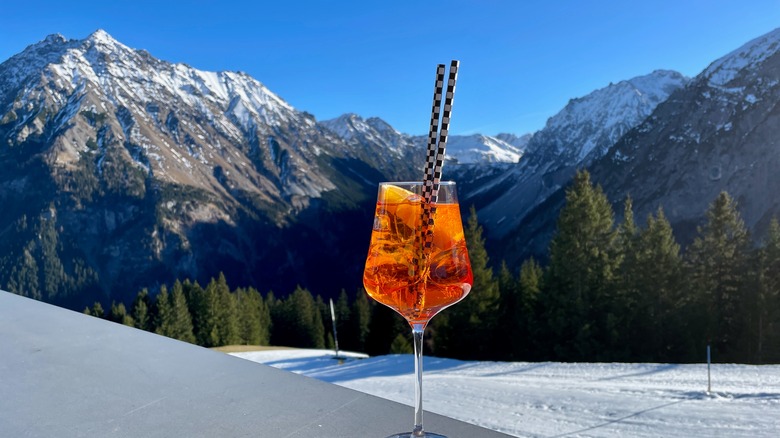What Does Alpine Liquor Really Mean?
An alluring beauty of spirits is their distinct regional nature. From the complex terroir-driven profiles of mezcal to the local botanicals that go into a bottle of gin, high-quality liquors showcase flavors unique to their origin. And while spirits are typically categorized by their distillation base, it's also possible to delineate booze styles by their place of origin.
Such is the case for alpine liquor, a term that encompasses spirits and liqueurs crafted with ingredients from high elevations. Included bottles range in alcoholic content, production methods, and geographic origin, but they do have shared characteristics. They overlap in the use of shared alpine flavors, be it pine, chamomile, or gentian, and tend to have a boozier feel that lends a warming quality. They're predominantly made in the Alps region of Europe, especially in Switzerland, France, Austria, and Italy. However, the term can also reference other global expressions, too — like spirits produced in the United States or liquors crafted high in the Peruvian Andes. What unifies all expressions is a reliance on local ingredients matched with artisanal techniques.
Alpine liquors are crafted with high-quality ingredients in mountainous surroundings
The term alpine liquor isn't regulated and, therefore, includes dozens of varying styles associated with the name. Classic examples are old-school European liqueurs, which take on complex palates that are oftentimes bitter, herbal, and stiff. Iconic Chartreuse — produced by Carthusian monks in the French Alps — is an especially acclaimed example, loaded with a secretive mix of over one hundred ingredients.
Many alpine liquors are connected to après-ski drinking traditions. There's the herbal and honey-like Génépi, fit for sipping straight or in highball format. And Austrian and German-produced schnapps also fall under the moniker, constructed with delicious local ingredients like pine, pear, and apricot. Plus, there's Northern Italian Amaro, brimming with fruit and spice flavors sourced from the Alps.
Such local sourcing, matched with a distinctive (sometimes secretive) recipe, defines the style. And modern distillers have employed such a formula far away from the Central European liqueur hotspot. There are American West Coast renditions loaded with aromatic ingredients like pine and gentian. Or Peru's Destilería Andina, high in the Andes, infused a double distilled rum with a dozen local ingredients. Despite such a wide-reaching origin, all the liquors have a common quality: They make for a superbly aromatic sip or mixed drink at high altitudes.

